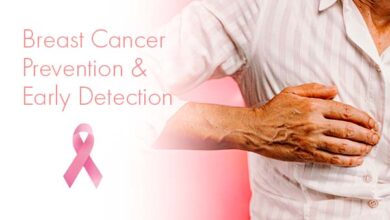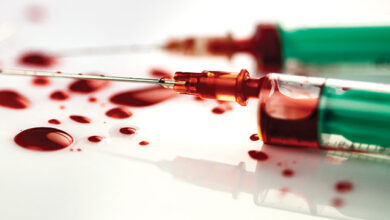What to Do If a Child is Injured at School or Daycare?

As a parent, your child’s health and safety are your top priority. But even supervised settings like schools and daycares can’t prevent every accident. Knowing how to respond if your child suffers an injury while in someone else’s care helps ensure they receive proper treatment.
Stay calm, gather information, get medical attention, and address safety concerns. With the right response, most common childhood mishaps are treatable. Arm yourself with a plan to handle school or daycare injuries smoothly.
Remain Calm and Objective
It’s understandable to feel anxious or upset hearing your child is hurt. But staying calm allows you to respond rationally. Avoid blaming the school or caregivers without facts. Focus on your child’s well-being, not fault-finding.
Provide comfort and reassurance. Ask what happened factually. With an injury, timing matters so try to avoid lengthy conversations until treatment begins. Assess the situation objectively.
Gather Key Information
Politely ask questions to understand what occurred:
- What type of injury is it? Cuts, bruises, sprains, etc.?
- Where on the body is the child injured?
- What caused the injury? Fall, collision with object/child, accident?
- How severe does the injury seem? Is medical care needed?
- Has first aid been administered? Ice, bandages, cleaning?
- Is 911 required based on injury type/severity?
Get a clear picture of the incident, injury sustained, and care given already. This aids in quick decision-making on the next steps.
Have the Child Evaluated Medically
For anything beyond minor scrapes, have the child seen by a doctor promptly. Head injuries especially warrant medical examination, even if subtle.
For serious injuries requiring immediate ER transport, an ambulance will called right away. Otherwise, school staff can help arrange pickup or transportation for urgent care/doctor visits.
Injuries like deep cuts, sprains, potential fractures, or concussions shouldn’t wait–seek same-day medical attention. Better safe than sorry.
Pick Up Your Child
Unless emergency transport is required. You or an emergency contact will need to pick up an injured child from school for medical evaluation.
If you cannot leave work immediately. Arrange for your spouse, grandparent, or other trusted person. To collect your child for care. Explain the injury and recommend the next steps.
In areas like Myrtle Beach, experienced personal injury attorneys are available to review school and daycare injury cases, gather the evidence needed to prove liability, and advise families if grounds for a claim exist based on the specific circumstances reached at Personal Injury Attorney Myrtle Beach. Of course, legal action should not be taken lightly, but personal injury attorneys can provide guidance when an injury results from preventable risks a school or daycare failed to address properly. If you have questions, don’t hesitate to discuss options with reputable personal injury attorneys in your area.
Try to pick up your child on time. School nurses can only provide limited treatment onsite.
Have the Doctor Assess the Injury
A doctor should examine any significant pediatric injury–do not just treat it at home without professional input. At the appointment:
- Explain how the injury occurred based on the information received.
- Describe symptoms and pain complaints.
- Share any first aid or treatment already administered.
- Answer any medical history questions honestly.
- Discuss any medications or allergies.
Provide complete details so the doctor can make informed recommendations and rule out serious issues. Treatments may include medication, splinting, stitches, imaging scans, referrals to specialists, or advice to observe at home.
Follow all doctor guidance, including any prescribed medication, activity limitations, or follow-up appointments. Closely monitor the injury for appropriate healing.
Address Any Safety Issues
If an injury resulted from problematic conditions at the school or daycare, bring concerns to their attention for correction. Issues might include:
- Damaged playground equipment
- Unsecured furniture tipping over
- Lack of safety gear like helmets or pads
- Insufficient supervision ratios
- Dangers like uncovered electrical outlets
- Allergic risks from food policies
While accidents happen, addressing preventable hazards reduces future chances of harm. Have constructive conversations on improving safety.
Record Details of Incident
Thoroughly document the incident for several reasons:
- Provides accurate facts if questions later arise
- Helps identify needed policy improvements at school/daycare
- Preserves account for insurance/claims purposes
- Tracks history if injuries become a pattern
Details to record include date, time, location, witnesses, cause, symptoms, treatment, and names of staff involved. Keep organized records should any disputes occur.
Monitor Recovery at Home
Once discharged, watch your child for complications like increased pain, new symptoms, or abnormal behavior. Which could indicate a hidden issue. Follow all home care instructions diligently.
Watch for signs of concussion–like drowsiness, confusion, or balance issues after head injuries. Elevate bandaged limbs to reduce swelling. Medicate for pain as directed.
Call the doctor with any concerns about healing or changes. Recovery from childhood injuries is usually quick barring complications.
Discuss Preventing Future Incidents
Once your child is feeling better, talk with them about staying safe to avoid similar injuries in the future. Go over the rules of the playground, how to use equipment the right way, and be careful while playing.
You can also speak with teachers or caregivers about what extra safety measures that needed. This could mean more supervision, using safety gear, making the playground safer, or teaching kids about how to play safely.
When injuries happen, handling them the right way helps kids recover faster. It’s important to stay calm, focus on taking care of the injury, and have a helpful conversation to avoid future accidents.
FAQs About Child Injuries at School and Daycare
What are common injuries for school-aged children?
Frequent injuries include cuts, scrapes, and bruises from falls or collisions, sprains and strains from physical activities, and occasional broken bones from accidents. Head injuries are less common but need urgent care.
When should an ambulance be called for a school or daycare injury?
Call 911 immediately if injuries are life-threatening like heavy bleeding, seizures, loss of consciousness, impaired breathing, severe head trauma, or symptoms of internal injury like severe abdominal pain.
Can a child with a minor injury stay at school or be sent back after treatment?
If a child has minor injuries, like scrapes or small bruises, and they feel fine after getting treatment, they can usually stay at school. But for more serious injuries, like bad sprains, possible fractures, or head injuries, it’s best to have them picked up for a medical check.
What if my child feels mistreated after being injured at school?
Take concerns seriously. Discuss incident details and feelings without placing blame. Report problems to school leadership for investigation. If harm is inflicted, consider solutions like behavioral plans, added supervision, or staff training.
How soon after an injury should my child return to normal activity?
Follow doctor recommendations, but most childhood injuries heal within 2-4 weeks. Ease back into physical activity as pain permits. With head injuries, restrict physical and cognitive exertion initially, then gradually increase stimulation as symptoms improve.
Conclusion
Dealing with a child getting hurt is never fun. But staying calm, getting them treated, and taking steps to avoid future accidents helps them recover safely. Make sure to get all the details on what happened and have a doctor check for any significant injury. By handling the situation calmly and getting your child the right care, you help them heal up fast. And you can have constructive talks with them and the school about playing more carefully in the future. With the right response, most common booboos are totally treatable and become lessons on being more careful while having fun.



